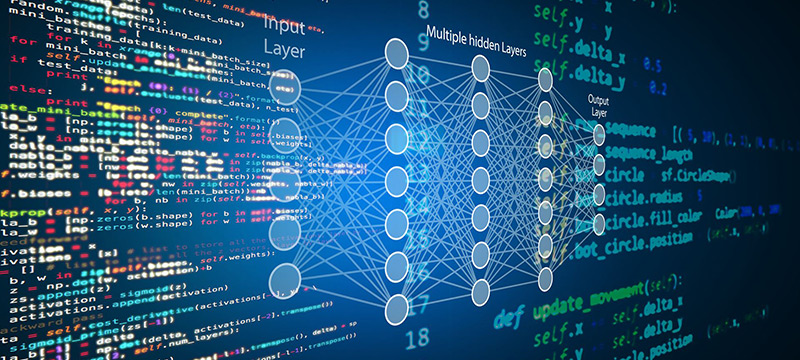[ad_1]
Deep learning, also called Deep Structured Learning, is a machine learning method that enables computers to emulate the human brain to accomplish classification tasks. It’s an essential component in data science, which includes predictive modeling and statistics. In particular, this can be beneficial to data scientists who collect, analyze, and interpret a large amount of data because it helps make these tasks faster and easier.
When applying deep learning algorithms, artificial neural networks play a significant role; an artificial neural network mimics biology, particularly the human brain’s behavioral patterns. In combination, deep learning and neural network methods enable computers to learn things by example, similar to the human brain. But since neural networks support most deep learning models, some data science professionals regard deep learning as deep neural networking or deep neural learning.
If you’re working in the tech industry or are an aspiring data scientist, you’ve probably read or heard the term ‘deep learning’ most of the time. In. this post, we’ll dig deeper into its origin, applications in various industries, and future outlook.
A Brief History Of Deep Learning
The concept of deep learning and artificial neural networks is rooted in the 1950s when British computer scientist and mathematician Alan Turing predicted the future invention of a supercomputer with the ability similar to a human brain. From that time onwards, scientists started trying to mimic the human brain. The first breakthrough of deep learning happened in the mid-1960s when Alexey Ivakhnenko, a Soviet mathematician, assisted by his associate V.G Lapa, developed small but functioning neural networks.
Furthermore, in 1986, computer scientist and Carnegie Mellon University professor Geoffrey Hinton was among the researchers who helped push the concept of neural networks by demonstrating that one can train a number of these networks using backpropagation to improve word prediction and shape recognition.
Hinton then proceeded to coin the term ‘deep learning.’ Later, in 1989, French computer scientist Yann LeCun delivered the backpropagation’s first practical demonstration at Bell Labs. LeCun combined backpropagation and convolutional neural networks to read handwritten digits. Consequently, such networks are being utilized for speech recognition and natural language processing, among others.
Eventually, the following remarkable step for deep learning came about in 1999 when computers became faster at processing data, and the tech industry developed graphic processing units (GPU).
Real-World Applications Of Deep Learning
Many industries can utilize various types of deep learning algorithms depending on the problem they need to solve. Some real-world applications of deep learning include:
- Self-Driving Cars
Deep learning is one of the primary tools that enable self-driving. It includes algorithms known as convolutional neural networks used to recognize and categorize various parts of the roads, objects around the car, footway locations, and traffic signs. The role of deep learning is to solve complex problems like vision tasks, enhance perception, and activate automated maneuvers in self-driving cars to ensure road safety and better commute.
- Computer Vision
Computer vision is a field that deals with how machines interpret the meaning of videos or digital images. Its algorithms analyze specific criteria in videos or digital images, then apply interpretations to decision-making or predictive tasks. The creation of deep learning technology allows the development of more complex and accurate computer vision models.
- Medical Imaging
Deep learning plays a vital role in medical imaging due to the ability of convolutional neural networks to categorize images and the availability of high-quality data. This can be useful in potentially improving medical diagnostics and the healthcare industry.
The Future Of Deep Learning
While deep learning systems are increasingly becoming better and more beneficial as data scientists use more data to train them, deep learning still faces issues that data professionals can’t solve simply with a size increase.
In particular, deep learning systems aren’t robust against changes in data distributions; conversely, humans learn to adapt and extrapolate much more quickly. Moreover, reinforcement and supervised learning require too much data and interactions in deep learning; in contrast, humans seem to learn things with far less experience.
Accordingly, to close the gap between artificial intelligence and human intelligence, scientists provide several solutions. Namely, hybrid artificial intelligence has been the widely discussed approach in the past few years, which combines classical symbolic systems with neural networks. Furthermore, the deep learning pioneers Geoffrey Hilton, Yann LeCun, and Yoshua Bengio believe that enhanced neural network architectures will ultimately lead to all aspects of animal and human intelligence, including reasoning, causal inference, symbol manipulation, and common sense.
Wrapping It Up
Overall, the good thing about deep learning is that it has various applications, and a wide range of industries can utilize it. Although it’s a little slower compared to other machine algorithms, it’s undeniable that it’s way more powerful and beneficial due to its various multiple real-world applications, such as in supply chain, manufacturing, robotics, and medicine.
[ad_2]
Image and article originally from iotbusinessnews.com. Read the original article here.


